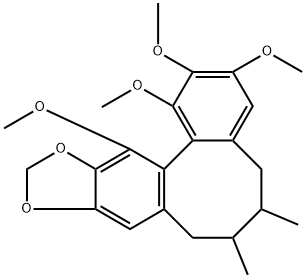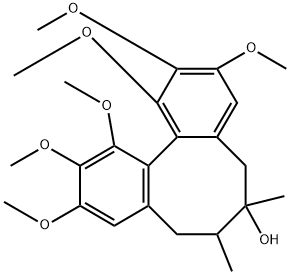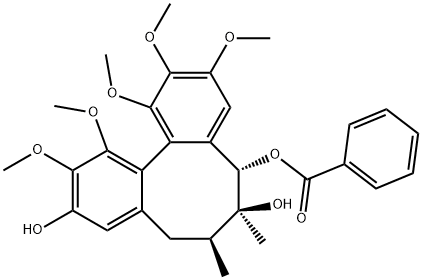Schizandrin C , Analysis of standard products, ≥98% , 61301-33-5
| Pack Size | Price | Stock | Quantity |
| 20MG | RMB735.12 | In Stock |
|
| others | Enquire |
PRODUCT Properties
| Melting point: | 122-123℃ |
| Boiling point: | 549.2±50.0 °C(Predicted) |
| Density | 1.232 |
| storage temp. | 2-8°C |
| solubility | DMSO : 8.33 mg/mL (21.67 mM; Need ultrasonic)H2O : < 0.1 mg/mL (insoluble) |
| form | powder |
| color | White |
| LogP | 5.623 (est) |
Description and Uses
Schisandrin C is a lignan originally isolated from Schizandrae that has diverse biological activities. It decreases viability of U937 cells in a concentration-dependent manner and induces cell cycle arrest at the G1 phase when used at a concentration of 100 μM. Schisandrin C (5-20 μM) decreases hydrogen peroxide-induced cell death and production of reactive oxygen species (ROS) in C2C12 skeletal muscle cells. It also decreases levels of matrix metalloproteinase-2 (MMP-2), MMP-9, COX-2, VCAM-1, IL-1β, and TNF-α in hydrogen peroxide-stimulated C2C12 cells. Schisandrin C decreases lipoteichoic acid-induced production of nitric oxide (NO), prostaglandin E2 (PGE2; ), TNF-α, IL-1β, and IL-6 in mouse primary microglia. In vivo, schisandrin C (200 mg/kg) decreases serum alanine amino transferase (ALT) and aspartate amino transferase (AST) activity, increases hepatic mitochondrial and total glutathione (GSH) levels, and reduces liver injury in a mouse model of acetaminophen-induced liver injury partially via inhibition of the cytochrome P450 (CYP) isoforms CYP2E1, CYP1A2, and CYP3A11.
Schisandrin C potently inhibits proprotein convertase subtillsin-kexin type 9 (PCSK9) mRNA expression. Also, it displays strong protective effects in SH-SY5Y cells against serum and glucose deprivation (SGD) injury.
Safety
| Symbol(GHS) |   GHS07,GHS09 |
| Signal word | Warning |
| Hazard statements | H302-H410 |
| Precautionary statements | P264-P270-P301+P312-P330-P501-P273-P391-P501 |






